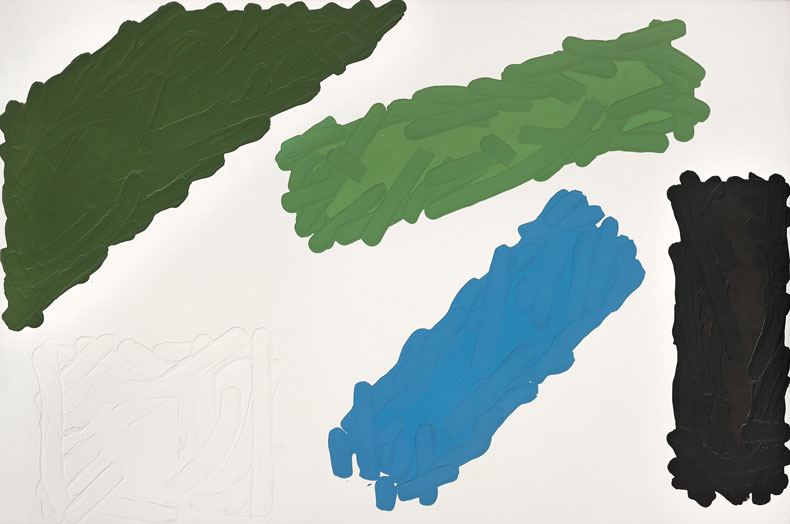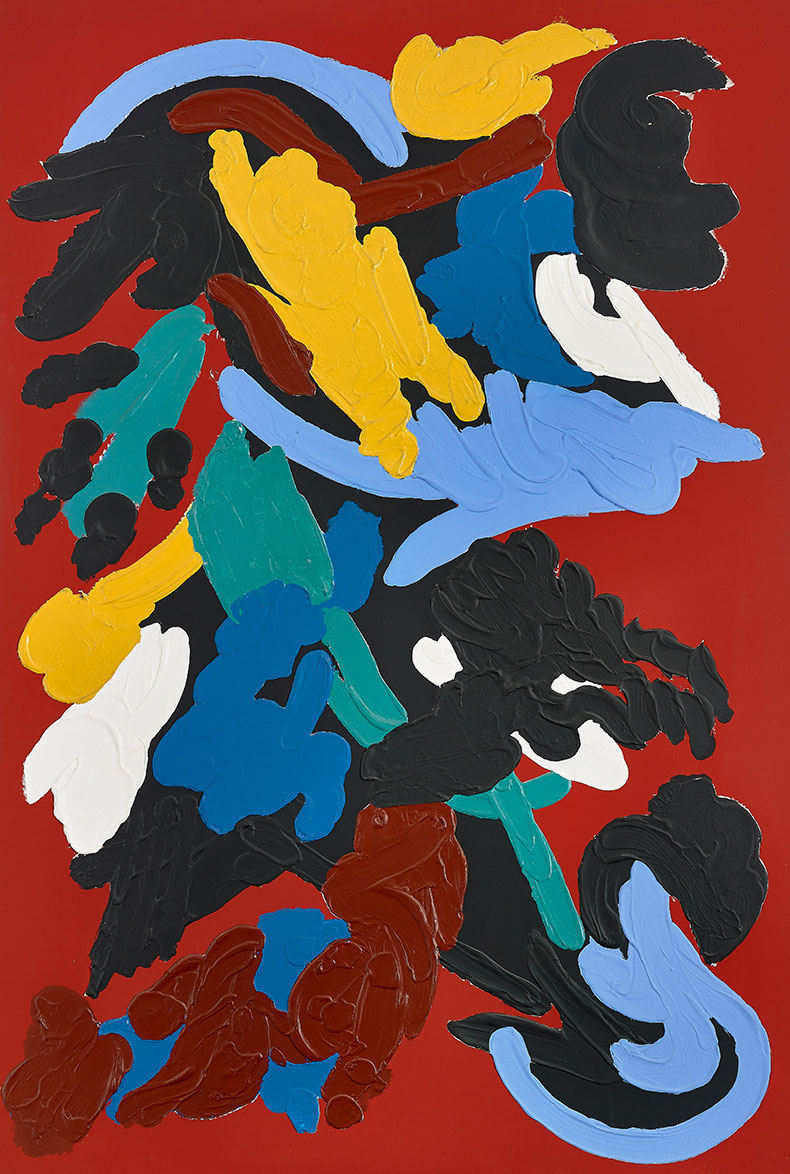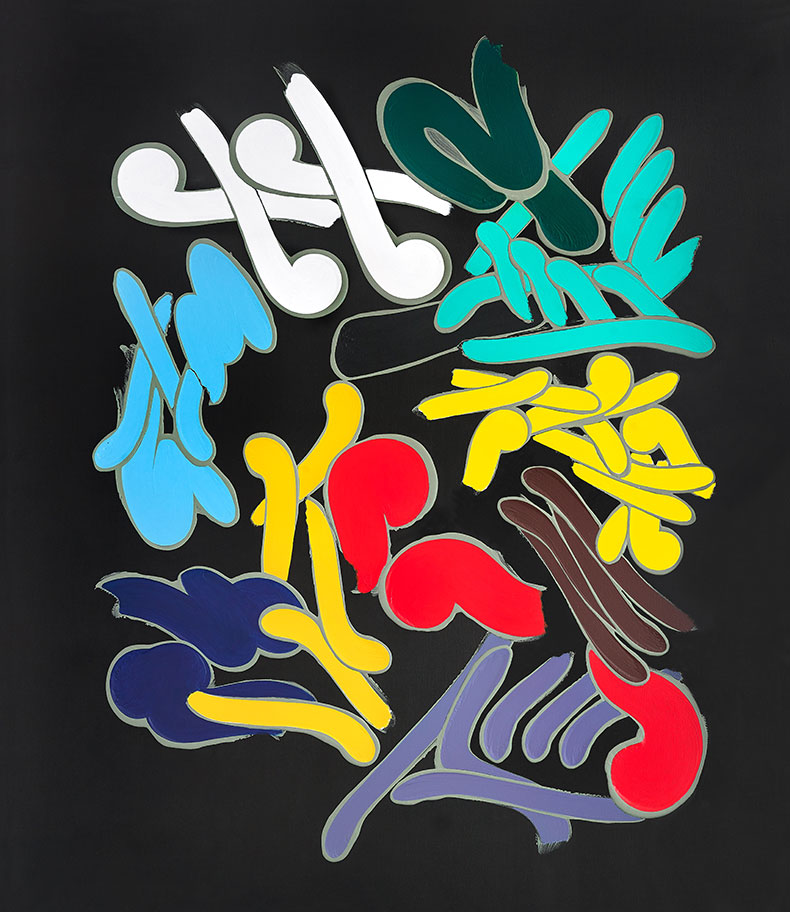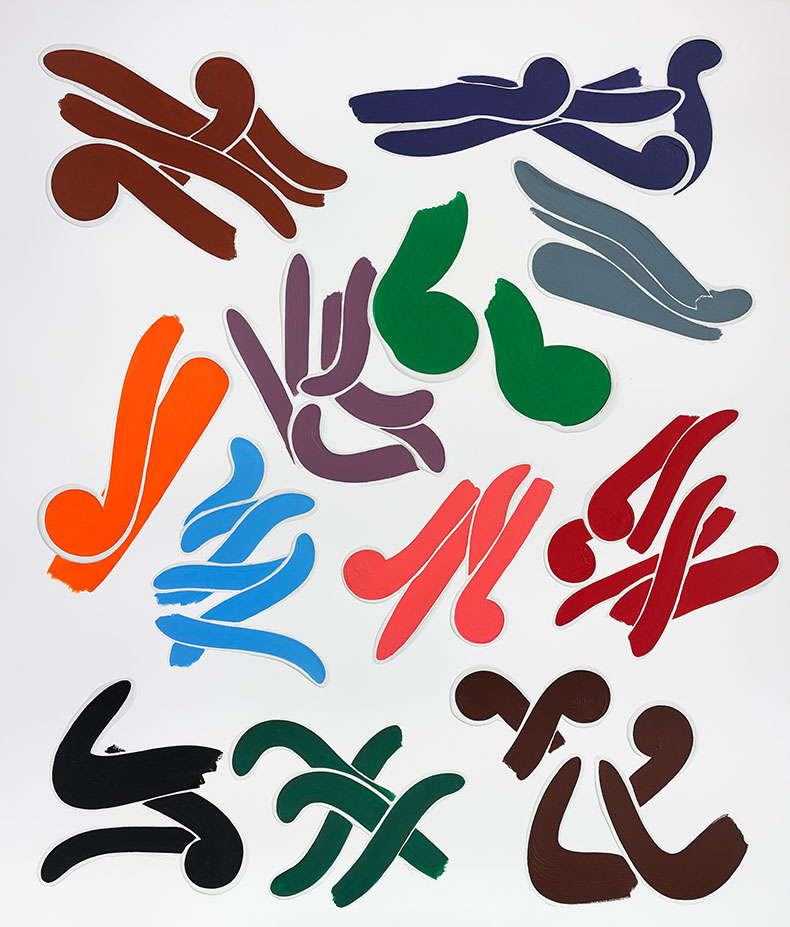‘Rétrospective en 14 tableaux’ at the Musée d’art moderne in Paris is the first solo museum survey for Pierre Dunoyer in more than 30 years. Though he’s almost entirely unknown outside France, the Marseille-born abstract painter’s influence on French contemporary art is pronounced, if subtle. He had a part in the small but highly influential group Janapa, alongside fellow painters Christian Bonnefoi and Antonio Semeraro, and sculptors Jean-Luc Vilmouth, Tony Cragg and Côme Mosta-Heirt. Dunoyer took part in three Janapa exhibitions in the late 1970s, with works responding to other groups that had developed in the previous decade, especially the minimalist paintings of BMPT (Daniel Buren, Olivier Mosset, Michel Parmentier and Niele Toroni), or those of the Supports/Surfaces group (Daniel Dezeuze, Claude Viallat). However, Janapa deliberately isolated themselves from the art world, leading the importance of their work and exhibition to be rediscovered only later.
In writings and interviews, Dunoyer speaks of his revelatory experience at the Barnett Newman retrospective at the Grand Palais (1972), and Ad Reinhardt’s the following year. In 1976, while studying psychiatry, a doctor asked him to paint a mural. He began painting in earnest two years later.

Elėonora (1979), Pierre Dunoyer.
But to speak – as this exhibition does – of Dunoyer’s art in terms of chronology is to be led into a tricky contradiction in terms. On the one hand, the exhibition shows 14 paintings picked from an oeuvre of about 400 works to narrate Dunoyer’s development; it begins with works from his earliest period, like Blanc (1978) and Elėonora (1979), and concludes in 2022. On the other hand, there is the artist’s single-minded project: the pursuit of what he calls the tableau – French for ‘painting’, but a term appropriated by Dunoyer for use in a highly specialised, complex way, above all to deny that painting has any storytelling capacities. So there is a compelling friction between what the curators have tried to achieve by presenting Dunoyer’s art chronologically and the ways that Dunoyer wants his work to resist the narrative dimensions of painting. Another difficulty arises with the inherent complexity of the concepts that interest Dunoyer. Everything in Dunoyer’s work is determined by the idea of the tableau: a difficult, highly technical philosophy of painting influenced primarily by the thought of Martin Heidegger.
The selection in ‘Rétrospective’ presents viewers with gradual but still very evident shifts in Dunoyer’s use of forms. This goes from the geometric formalism of Blanc (1978), where shapes float in mostly empty space, to the busy impasto forms of Rouge (1985), which is built up of multiple layers of overlapping flourishes, to more recent works like Blanc (2008) or Bleu (2022) where the painted marks in the foreground are far more clinical and clearly separated from one another.

Rouge (1985), Pierre Dunoyer.
By creating works intended to deny the possibility of interpretation, Dunoyer presents both the curators and the visitors of this exhibition with a conundrum. Perhaps Noir (2002) provides a good insight into this problem. Here, a series of shapes including some that look like white crosses or truncated hockey sticks, tangled yellow flicks, and navy globules gather around each other on a black monochrome base. Dunoyer would, of course deny that any of the twirling skeins he paints look like anything we could name, because the tableau is intended precisely to eliminate the ‘risk of committing an error or a subjectivization’. What we can say for sure is that Noir is made in the same way as everything that comes before and after it: acrylic on canvas applied with a large paintbrush for the modelling paste and gel, giving it a glossy quality, and a smaller brush for applying colour. This comes after Dunoyer lays the canvas flat on the ground, gives it a monochrome base that determines the pictorial space as the dominant colour, giving most of the works their title, and applies the foreground paint in successive layers.

Noir (2002), Pierre Dunoyer.
However, the reason that Noir seems so significant in the context of ‘Rétrospective’ is because it’s the first time we begin to see Dunoyer’s cavorting foreground marks break apart from each other, becoming more deliberate and clearly defined in their shape and structure. With Rouge (1985), by contrast, the daubings are tangled up together, never letting each other breathe, colliding so that each one couldn’t resemble anything in the world beyond the canvas even if Dunoyer wanted it to. After Noir and Jaune (2002), each distinctively coloured marking becomes a singular visual unit, even if it is made up of multiple flourishes. This eventually reaches a point at the end of the exhibition, with Blanc (2008), Rouge (2009), and Bleu (2022), where not only do these forms not touch at all, but there are simply fewer of them to look at, leaving the monochrome space to do more work.
Of course, the problems posed by ‘Rétrospective’ have a broader application than the works of Dunoyer alone. At stake is the question of how difficult paintings, determined by a radical, highly abstract set of theories that cannot easily be digested, are able to fare in the contemporary era. Dunoyer’s work is photogenic – you could call them ‘Instagrammable’. But it also pushes the theories of painting elaborated by Kazimir Malevich or Hans Hofmann to the edges of where visual language can go.

Blanc (2008), Pierre Dunoyer.
‘Pierre Dunoyer: Rétrospective en 14 tableaux’ is at Musée d’art moderne, Paris until 13 March.














![Masterpiece [Re]discovery 2022. Photo: Ben Fisher Photography, courtesy of Masterpiece London](http://zephr.apollo-magazine.com/wp-content/uploads/2022/07/MPL2022_4263.jpg)
Suzanne Valadon’s shifting gaze